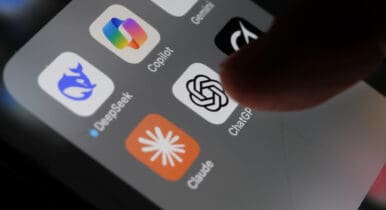Innovation Will Be Driven by the Need to Meet Voters Where They Are

It’s a challenging time to be involved in politics. Our democracy is fragile, our rhetoric is fear-based and our communities are politically polarized. Like many, I strive to maintain hope, and I’m fortunate to work in political technology — a space brimming with optimism, innovation and forward-thinking ideas.
Our field is full of innovators, problem solvers and creators who eagerly tackle challenges. We have a small but mighty ecosystem poised to revolutionize campaign strategies. This community wasn’t built overnight, but it has rapidly evolved in response to the changing landscape of societal engagement.
When I started on the Obama campaign 17 years ago, technology didn’t really have a role in politics. And that made sense. It didn’t have much of a role in society. In 2007, smartphones were a novelty, Facebook was confined to college campuses and Twitter was still in its infancy.
The field team was trained to organize by meeting people where they are and moving them to action. So we went where the people were: barbershops in South Carolina, campus rallies in Michigan and the Iowa State Fair. Conversely, technology now permeates every aspect of our lives — from learning to communication to work, shopping, advocacy and entertainment. Our world is tech enabled and our tactics have had to change.
We have made a lot of progress since the internet first entered the political scene in 2004. Howard Dean started to raise money online and his campaign hosted self-organized meet ups across the country. VAN became the dominant CRM for Democratic campaigns and we began to discover what technological innovation meant for our work. By 2008, Barack Obama decided to lean into technology as a core tenant of his campaign strategy, partially out of necessity.
As a longshot, unknown primary candidate, he needed technology to scale his operation and ultimately capture the organic enthusiasm that was spreading across the country. In addition to sophisticated email list management, online fundraising and a robust digital team, the campaign also used MyBo, a tool that allowed people to self-organize in their communities.
While sometimes frustrating for organizers trying to hit our voter contact goals, MyBo showed the power of technology when used to empower everyday people to engage more deeply in their civic lives.
The next five years brought rapid technological advancement. SMS became a central mode of communication, social media gained prominence and digital ads became their own budget line items. Big data and machine learning drove our growing analytics departments. Democrats were able to adapt quickly because we had been investing in digital and technology talent for years. We had the talent, the resources and the interest to innovate.
But society was innovating faster than we were, and 2016 exposed that gap. Operatives and funders alike saw that we were losing a critical edge and invested in making our technology better. In 2017, we launched Higher Ground Labs to build a start-up ecosystem for the left and funded companies like Mobilize, Grow Progress, BallotReady and many others. The Democratic National Committee invested deeply in tech and data for the first time ever. Groups like Zinc Collective and Arena started to focus specifically on tech talent recruitment and retention. The Movement Cooperative built collective buying power for new technology.
Over the past eight years, we have built a tech ecosystem for the Left. Campaigns can now choose their tech infrastructure from a number of solutions. Hundreds of professionals have built careers in political technology. Campaign leadership values data. Technology is available for races down ballot for the first time ever. We are much closer to using technology the way other industries do — as tools to make us more efficient, more effective and allow more people to engage in this crazy, messy, beautiful civic process.
We need the power of that ecosystem now more than ever before.The mode of engagement has changed again, and almost all engagement is tech enabled. In 2024, we failed to reach and motivate many of the voters we have historically relied on. We didn’t reach them because they’re spending time in different corners of the internet. Today’s media ecosystem requires mass content production with quick distribution channels, not the carefully protected brands of the past.
We should be using artificial intelligence. Voters are getting information from trusted messengers that share authentic thoughts on candidates and issues. We should be building creator infrastructure. We have the technical ability to really understand the impact of our media spend. We should be doing that in real time. Democrats need to invest in innovation and technology now to meet this moment.
Looking to the future, our strategy and our technology need to evolve together. Every strategy is tech enabled and every tool serves a programmatic priority. As we build these plans, we strive to keep that core organizing principle central to our work: Meet people where they are.
Betsy Hoover is founder and managing partner of Higher Ground Labs. Prior to HGL, she worked throughout the political space including as a founding partner at 270 Strategies and as the National Digital Organizing Director on the Obama Campaign.
This piece appears in the commemorative 45th Anniversary print edition of Campaigns & Elections magazine.


